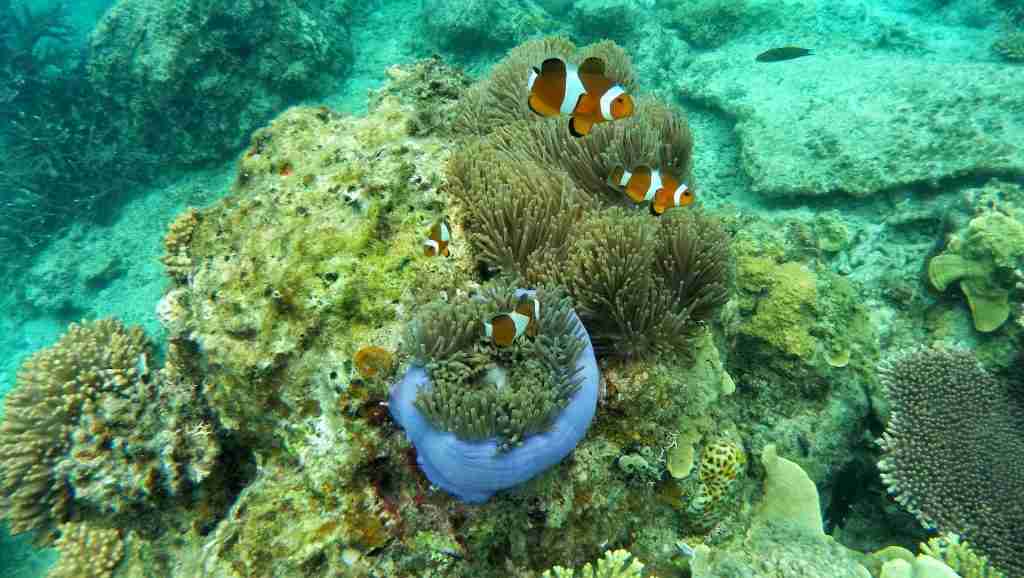The Maldives, an archipelago in the Indian Ocean, is renowned for its breathtaking natural beauty, pristine white-sand beaches, and crystal-clear turquoise waters. But it’s beneath the surface where the true magic of the Maldives lies. With abundant, vibrant coral reefs, diverse marine life, and captivating underwater landscapes, the Maldives offers an unparalleled experience for diving and snorkeling enthusiasts. In this article, we will delve into the mesmerizing water life of the Maldives, highlighting its rich biodiversity and providing essential tips for an unforgettable underwater adventure.
Maldives Diving Activities
Discover Vibrant Coral Reefs:
The Maldives is home to some of the most stunning coral reefs in the world. Dive into the azure waters and explore a kaleidoscope of colors as you encounter deep coral formations, including hard corals, soft corals, and coral gardens. Be amazed by the intricate shapes and textures, and marvel at the diverse marine life that calls these reefs home.
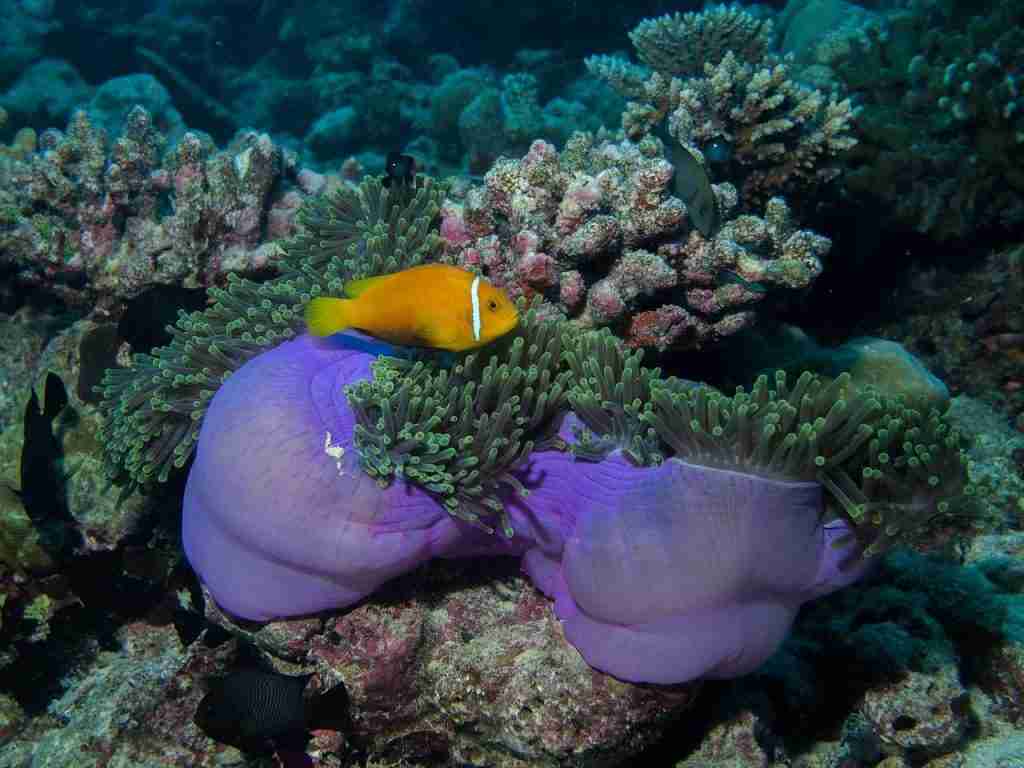
Encounter Majestic Manta Rays:
The Maldives is famous for its encounters with majestic manta rays, offering a thrilling and awe-inspiring experience for divers and snorkelers. Visit famous manta ray cleanings stations like Hanifaru Bay and Lhaviyani Atoll to witness these majestic creatures gracefully swimming through the water, displaying their impressive wingspans. Snorkel alongside them or dive deeper to observe their elegant movements up close.
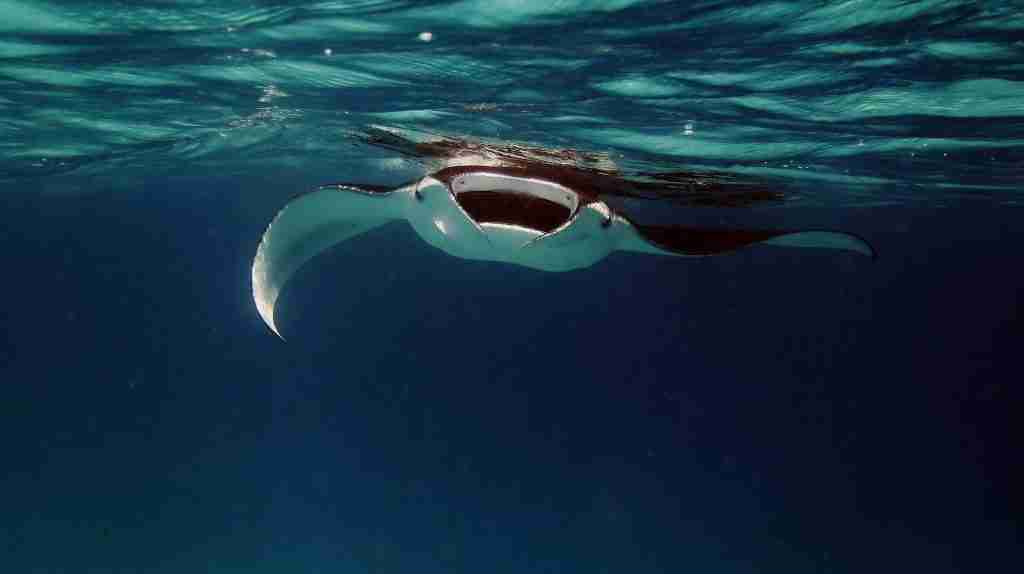
Swim with Gentle Giants: Whale Sharks:
The Maldives is also a haven for encounters with the gentle giants of the ocean, whale sharks. These magnificent creatures, the largest fish in the world, visit the Maldives to feed on plankton and small fish. Join a guided snorkeling or diving excursion, and if you’re lucky, you may get the opportunity to swim alongside these majestic creatures, marveling at their sheer size and grace.
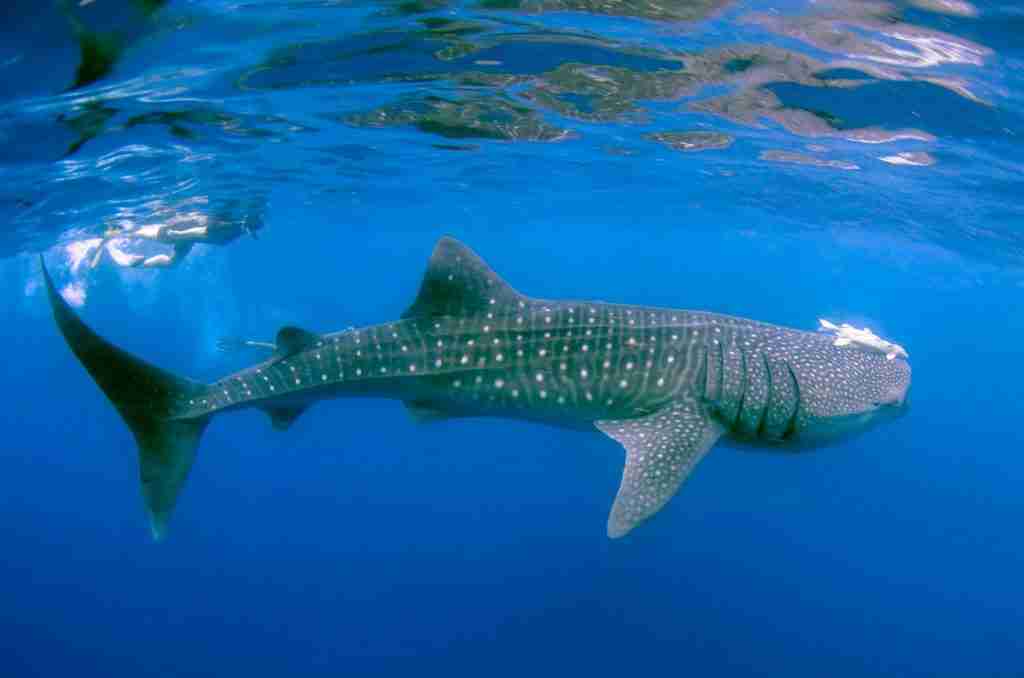
Explore Thriving Marine Biodiversity:
The Maldives boasts an incredible array of marine life, making every dive or snorkeling excursion a unique and captivating experience. Encounter schools of colorful tropical fish, including angelfish, parrotfish, butterflyfish, and triggerfish, as they dart around the coral reefs. Spot curious sea turtles gracefully gliding through the water or face yourself with elusive reef sharks and eagle rays.
Dive into Fascinating Wreck Sites:
The Maldives offers several intriguing wreck sites for those seeking a more adventurous diving experience. Dive into the depths and discover sunken vessels, such as the famous British Loyalty Wreck or the Maldives Victory Wreck. These sites provide a glimpse into maritime history and serve as artificial reefs, attracting a variety of marine life.
Embrace Night Dives:
Experience the Maldives’ underwater world in a new light with night dives. As the sun sets, the ocean comes alive with nocturnal creatures and mesmerizing bioluminescence. Witness various fascinating marine species, including octopuses, moray eels, lionfish, and shrimp. The dark waters illuminated by your dive torch create an enchanting and otherworldly atmosphere.
Snorkel in Shallow Lagoons:
Snorkeling is a popular and accessible way to explore the Maldives’ water life, even for non-divers. Many resorts offer house reefs steps away from the shore, where you can snorkel in shallow lagoons teeming with vibrant marine ecosystems. Strap on your mask, snorkel, and fins, and prepare to be enthralled by the myriad of colorful fish and intricate coral formations.
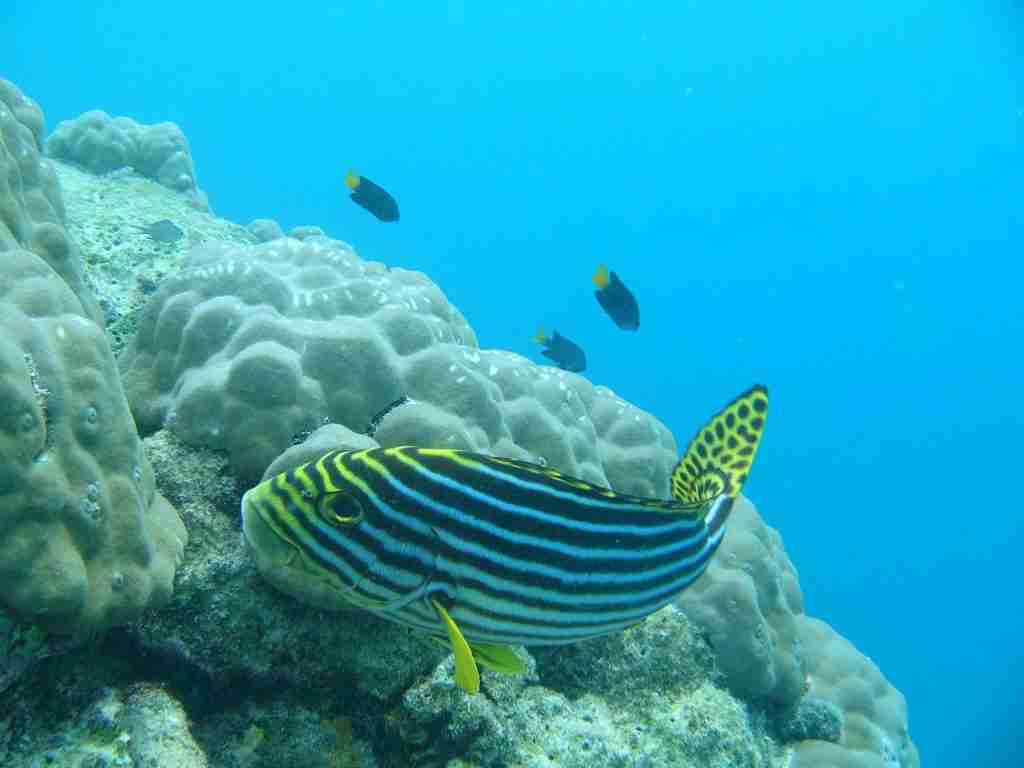
Dive Safely and Responsibly:
As you immerse yourself in the beautiful water life of the Maldives, it’s crucial to prioritize safety and practice responsible diving and snorkeling. Always dive with a certified guide or instructor, adhere to safety protocols, and ensure you are adequately trained and equipped for your chosen activities. Respect the delicate marine environment by refraining from touching or damaging corals and marine life, and follow guidelines for sustainable tourism practices.
Information you need to know before diving in the Maldives:
When to go?
The best time to dive in the Maldives is during the dry season, from November to April. The water is clear and calm during this time, and there is less chance of rain.
Where to dive?
There are many excellent dive sites in the Maldives, but some of the most popular include:
- Maaya Thila: This coral pinnacle rises up to 50 meters from the seafloor and is teeming with marine life, including sharks, rays, turtles, and a variety of fish.
- Cocoa Thila: This large Thila offers encounters with sharks, rays, schools of fish, and even the occasional whale shark.
- Alimatha Jetty: Located near the Alimatha Island Resort, this dive site is known for its diverse marine life, including sharks, rays, turtles, and colorful fish.
- Kandooma Thila: This prominent thila attracts divers with its vibrant marine ecosystem, including sharks, rays, schools of fish, and occasional whale shark sightings.
- Banana Reef: A long, sloping reef that houses an array of marine life, making it a captivating diving spot.
Diving certification:
To dive you need a valid diving certification is required. The minimum certification level accepted is Open Water Diver.
Diving equipment:
You have the option to rent or bring your diving equipment. If renting, ensure the equipment is in good condition and familiarize yourself with its proper usage.
Dive conditions:
Water temperatures in the Maldives range from 26 to 30 degrees Celsius (79 to 86 °F). Visibility is typically excellent, ranging from 20 to 30 meters (66 to 98 feet).
Marine life:
The Maldives is home to a wide variety of marine life, including sharks, rays, turtles, fish, and dolphins. Lucky divers may also spot whales, manta rays, and whale sharks.
Precautions:
When diving in the Maldives, it is important to take certain precautions:
- Be aware of currents: Some dive sites have strong currents, so diving with a guide and staying mindful of the currents is essential to ensure a safe diving experience.
- Respect marine life: While observing marine life, such as sharks, it is important to maintain a respectful distance and avoid any actions that could disturb or provoke them.
- Monitor weather conditions: The weather in the Maldives can change rapidly, so it is crucial to stay informed about the forecast and dive into favorable weather conditions for safety and visibility.
With these details in mind, you can make the most of your diving adventures in the Maldives. Remember to dive responsibly and enjoy the incredible underwater wonders this tropical paradise has to offer.
The Maldives offers a truly magical and immersive experience for water enthusiasts, with its vibrant coral reefs, majestic marine creatures, and thriving biodiversity. Whether you’re an experienced diver or a novice snorkeler, the Maldives’ water life will captivate you at every turn. Explore its azure waters, encounter graceful manta rays and gentle whale sharks, and be mesmerized by the kaleidoscope of colors that adorn the coral reefs. Embark on an underwater adventure of a lifetime in the Maldives, where the beauty of the marine world unfolds before you.
FAQ
Are the Maldives good for diving?
The Maldives is renowned as one of the world’s top diving destinations, offering exceptional underwater experiences. Its crystal-clear waters, vibrant coral reefs, and diverse marine life provide an ideal setting for divers of all levels. From thrilling drift dives to exploring underwater caves and encountering majestic marine creatures, the Maldives offers a captivating and unforgettable diving experience.
Which part of Maldives is best for diving?
While diving is excellent throughout the Maldives, certain regions are particularly famous for their diving opportunities. The North Male Atoll, South Male Atoll, and Ari Atoll are among the most popular choices due to their rich biodiversity, stunning dive sites, and easy accessibility. These areas boast abundant marine life, including colorful coral formations, manta rays, reef sharks, and other fascinating underwater species, making them ideal for beginners and experienced divers.
What month is best for diving in the Maldives?
The Maldives offers excellent diving conditions year-round, but the best time for diving typically falls between November and April. During this period, known as the dry season, the weather is generally calm, with excellent visibility and warm water temperatures. It is also ideal for spotting aquatic species, such as manta rays and whale sharks, at popular dive sites. However, diving is still enjoyable during the wet season (May to October), with slightly reduced visibility and occasional rain showers.
How much is scuba diving in the Maldives?
The cost of scuba diving in the Maldives can vary depending on factors such as the dive center, the dive package selected, and the specific dive sites visited. Generally, diving prices range from around $50 to $150 per dive, with discounts available for multiple dives or pre-booked dive packages. Additional costs may include equipment rental, marine park fees, and transportation to dive sites. It is advisable to check with dive centers or resorts for accurate pricing and any special offers available.
Is it safe to swim in the Maldives Sea?
Yes, swimming in the Maldives Sea is generally safe. The archipelago’s clear turquoise waters offer a tranquil and inviting environment for swimming and enjoying various water activities. However, it is always important to exercise caution and be mindful of any specific conditions or warnings provided by local authorities or resorts. It is advisable to swim in designated areas, follow safety guidelines, and be aware of currents, tides, and potential marine life interactions to ensure a safe and enjoyable swimming experience.
Can beginners scuba dive in the Maldives?
Absolutely! The Maldives welcomes beginners and offers a range of diving experiences suitable for novice divers. Many dive centers and resorts provide introductory programs, such as Discover Scuba Diving, where beginners can receive proper instruction, practice essential skills in shallow waters, and then embark on guided dives in controlled environments. These experiences allow beginners to explore the beauty of the underwater world under the guidance of experienced instructors, ensuring a safe and enjoyable introduction to scuba diving.
What seasons are whale sharks in Maldives?
Whale sharks can be encountered in the Maldives throughout the year. However, the highest chances of spotting these gentle giants are typically during the South Ari Atoll’s high season, which runs from December to April. During this period, plankton-rich waters attract whale sharks, creating excellent opportunities for snorkelers and divers to have memorable encounters with these magnificent creatures. Whale shark sightings are also possible in other atolls and regions of the Maldives. Still, the South Ari Atoll is particularly renowned for its consistent sightings.
Do you need a wetsuit to dive in the Maldives?
The need for a wetsuit when diving in the Maldives depends on personal preference and the water temperature at the time of diving. The water temperature in the Maldives ranges from approximately 26°C (79°F) to 30°C (86°F) throughout the year. Many divers find that a thin wetsuit, typically 3mm or 5mm, provides some insulation and protection against minor stings or scrapes. However, some divers may prefer diving without a wetsuit due to the warm water temperatures. It is recommended to consult with dive centers or experienced divers to determine the most suitable attire based on individual comfort and specific dive conditions.
Which is better, Maldives or Fiji, for diving?
The Maldives and Fiji offer incredible diving experiences, and the choice between the two ultimately depends on personal preferences. The Maldives is known for its clear waters, vibrant coral reefs, and abundant marine life. It offers easy access to dive sites, diverse underwater topography, and opportunities to encounter pelagic species like manta rays and whale sharks. On the other hand, Fiji showcases stunning soft coral reefs, thrilling drift dives, and encounters with large marine creatures like sharks and turtles. Both destinations provide excellent diving, so considering factors such as travel logistics, specific dive interests, and additional activities are worth considering when choosing between them.
